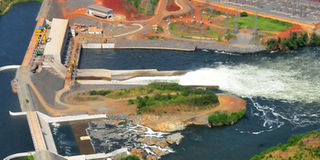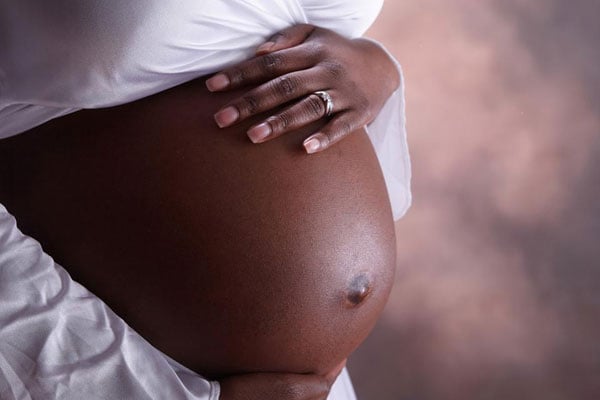African Development Bank to steer restructuring of Bujagali loan

Aerial view of the Bujagali Hydropower Project. Courtesy Photo.
What you need to know:
- $902 million – what it cost to build Bujagali hydropower plant.
$478 million (Shs1.7 trillion) – the outstanding Bujagali HPP loan. - We want to restructure all the loans on Bujagali which is close to 500 million dollars. We hope that AfDB will be able restructures all the loans under Bujagali with a view of reducing interest rate which on average is 6.25 per cent to a lower rate. This, combined with exemption of corporation tax, with the proposal before Parliament, will bring the cost of power from 11 US cents to 7 US cents. When you add Karuma and Isimba in the following years, the cost of power will come down to the targeted 5 US cents to support the manufacturing sector. In the few months, we will be able to fix this issue of Bujagali.” – David Bahati, the State minister for Planning.
KAMPALA
The government has engaged the African Development Bank (AfDB) and the International Finance Corporation (IFC) to restructure and refinance Bujagali hydropower plant’s loans.
AfDB and IFC now have to persuade the lenders who loaned Bujagali Energy Limited (BEL) money to build the plant to adjust the repayment period.
AfDB and IFC are also expected to find financiers who will lend the government money at interest rates lower than those at which BEL got its loans at to repay BEL.
According to BEL, it cost $902 million (Shs3.2 trillion going by Monday’s exchange rate) to construct the plant.
The outstanding balance, as of April 2017, was reportedly $478 million (Shs1.7 trillion).
Some of the financiers of the plant are the Netherlands Development Finance Company (FMO), the International Finance Corporation and Group Agence Française Développement’s Proparco.
The interest rate for the FMO loan is 11.36 per cent per annum, IFC – 7.23 per cent and 6.98 per cent per annum for the Proparco loan.
Uganda’s decision to zero on AfDB was informed by the fact that it is a Triple A–rated institution, meaning lenders perceive it as less risky to lend to.
The higher the risk a lender attaches to a borrower, the higher the interest rate that lender would charge.
In February, the government ruminated on using money in Bujagali’s Debt Service Reserve and the Working Capital Allowance accounts to settle Bujagali’s subordinate loan.
The accounts, as of 2012, had $45.2 million (Shs161.8 billion) and $19.2 million (Shs68.7 billion) respectively.
Government reasoned then that should the money in the accounts be used to settle that loan, it would result in a reduction of BEL’s generation tariff by US¢0.29 (Shs10.5) per unit.
The previous proposals, which the government was digesting, were to waive BEL’s corporate income tax and slashing of its return on equity from 19 per cent to 15 per cent.
Clearing the subordinate loan and waiving the corporate income tax would, according to government’s calculations, result in reductions of the tariff by US¢2.48 (Shs90) and US¢0.87 (Shs31.5) respectively.
On the other hand, extending the tenor of the senior loans by 10 years and the subordinate loans by five years would ensure Bujagali’s tariff plateaus at US¢10.94 (Shs363.1) over the next five years.
Lastly, it had been proposed that Bujagali’s plant factor is increased from 67 per cent to at least 70 per cent.
That would lead to a reduction of the tariff by US¢0.45 (Shs16.3).
Were all the above proposals are implemented at once, it should reduce Bujagali’s tariff from US¢ (Shs399.4) per unit to US¢5 (Shs181.5).




